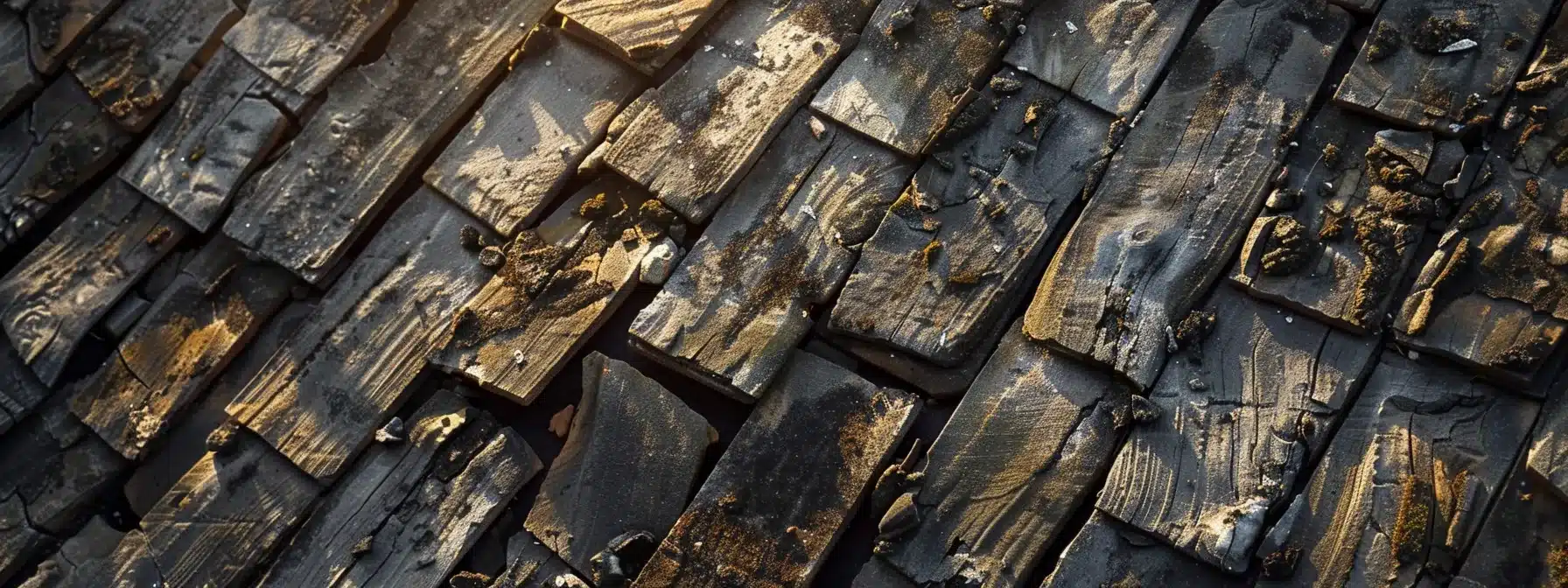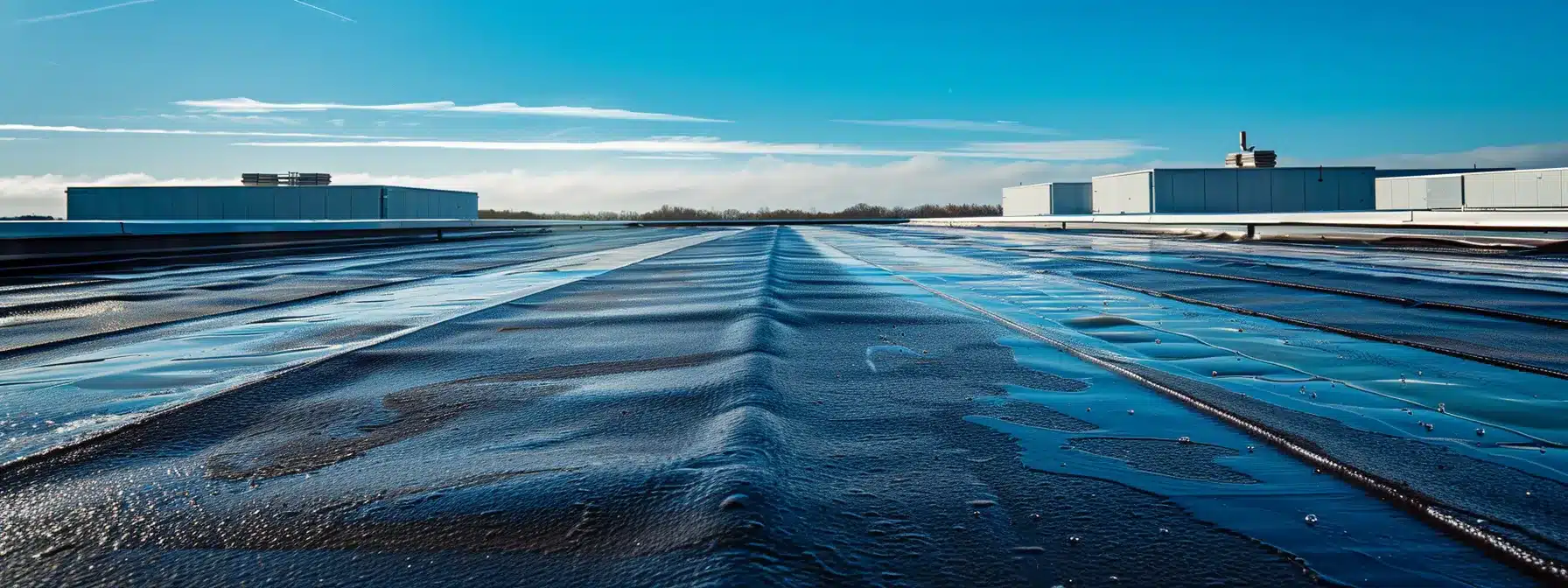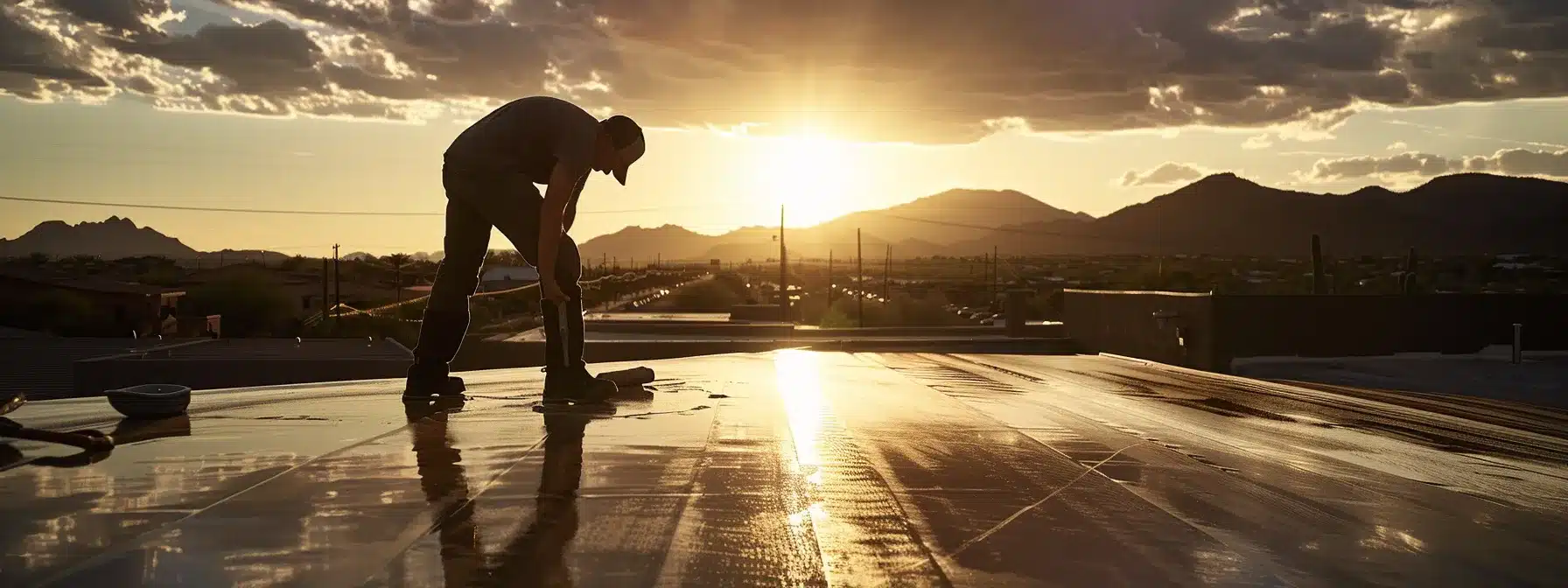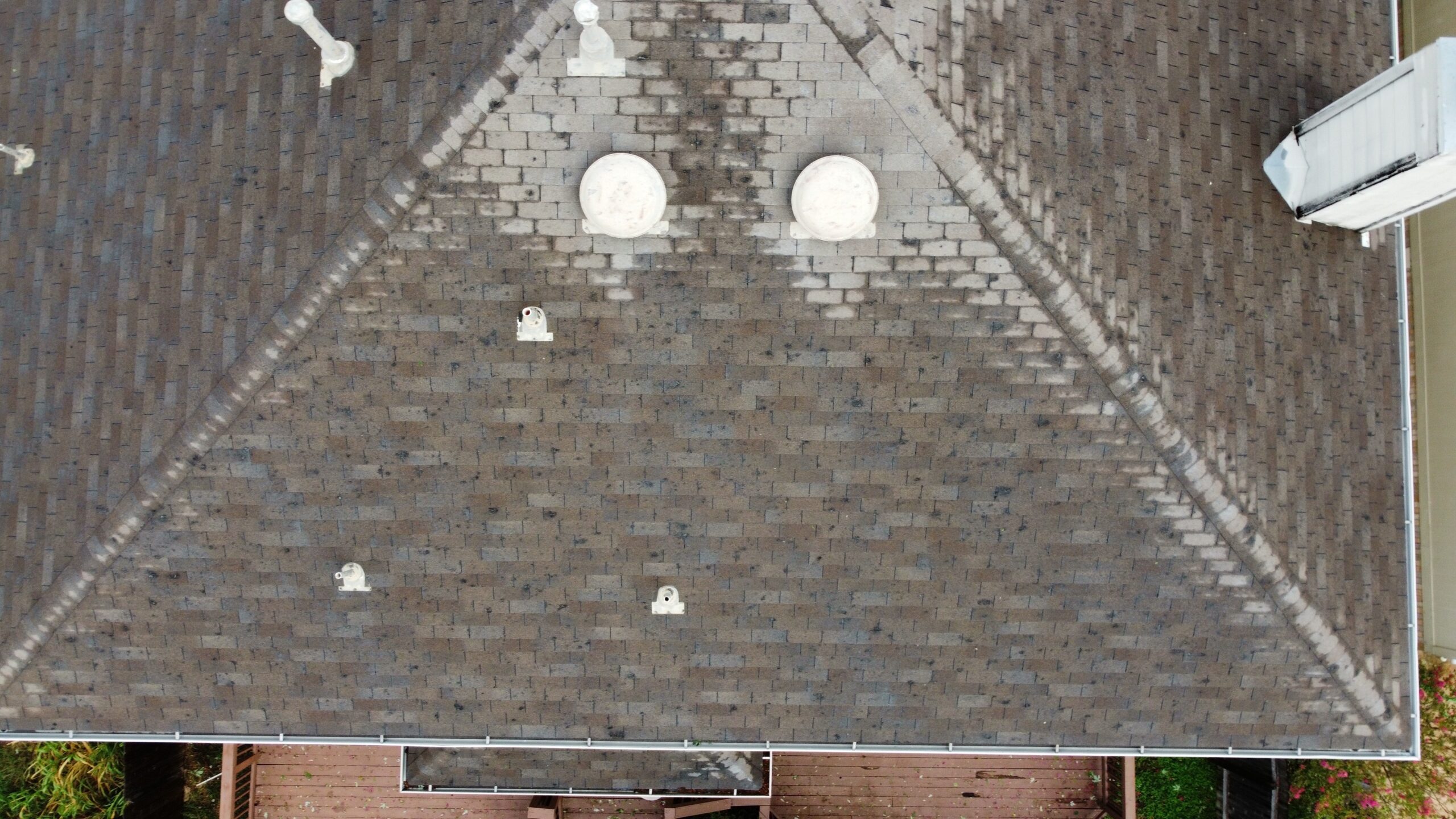How to Waterproof a Roof Effectively

Detailed Roof Waterproofing GuideTable Of Contents:
- Key Takeaways
- Understand the Importance of Waterproofing Your Roof
- Assess Your Roof Before Waterproofing
- Choose the Right Waterproofing Method
- Prepare the Roof Surface for Waterproofing
- Apply Waterproofing Solution Effectively
- Maintain Your Waterproofed Roof
- Frequently Asked Questions
- Conclusion
Is your roof ready to withstand heavy rain and hail? A leaky roof can lead to serious waterdamage, affecting your home’s structure and your bank account. This guide will show you how to effectively waterproof your roof, focusing on assessing your roof‘s condition, choosing the right waterproofing method, and applying liquidwaterproofing solutions. By following these steps, you’ll protect your home from moisture-related issues and extend your roof‘s lifespan, saving you money and stress in the long run.
Key Takeaways
- Regular roof inspections and prompt repairs are crucial for maintaining effective waterproofing
- Proper surface preparation, including cleaning and drying, is essential before applying waterproofing solutions
- Different waterproofing methods, such as liquidmembranes and sheet-based systems, suit various roofing needs
- Even application of waterproofing materials and following manufacturer instructions ensure optimal performance
- Consistent maintenance, including debris removal and drainage system upkeep, extends the life of waterproofed roofs
Understand the Importance of Waterproofing Your Roof

Waterproofing a roof is crucial for protecting buildings from water damage, reducing the need for roofleakrepair. This section explores the benefits of roof waterproofing and identifies common roof problems, including storm damagerepair. From extending the life of commercial roofing with modified-bitumen-roofing and modified-bitumin-roofing to supporting green roof systems, effective waterproofing techniques can enhance construction quality and potentially extend warranty coverage. Understanding these aspects helps property owners make informed decisions about their roofing needs, potentially reducing the necessity for roof leak repair and storm damage repair.
Recognize the Benefits of RoofWaterproofing
Roof waterproofing offers numerous benefits, including protection against water damage and increased longevity of roofing materials such as modified-bitumin-roofing. By applying a sealant, property owners can prevent leaks and reduce the need for emergency roofing services, such as roof leak repair and storm damage repair. This protective layer also shields the roof from harsh weather conditions, such as ice and heavy rain, ensuring the structure remains secure and dry.
Waterproofing techniques, like using aluminium coatings or modified-bitumin-roofing, can significantly improve a roof‘s energy efficiency and reflectivity. This process not only extends the life of the roof but also helps maintain a comfortable indoor temperature, potentially lowering energy costs. Properly waterproofed roofs require less frequent roofleak repair and storm damage repair, saving property owners time and money in the long run:
Identify Common Roof Problems
Identifying common roof problems is essential for effective waterproofing. Issues such as leaks, ponding water, and damaged shingles can compromise the integrity of a roof, leading to more serious damage including storm damage repair if left unaddressed. Regular inspections can help detect these problems early, allowing for timely roof shingle repair and roof leak repair, and preventing the need for extensive modified-bitumin-roofing solutions.
Proper ventilation and insulation play crucial roles in maintaining a healthy roof. Inadequate air conditioning or ventilation can lead to moisture buildup, potentially damaging the roof‘s structure and the building’s interior. Additionally, issues with the roof‘s textile components, such as underlayment or flashing in modified-bitumin-roofing systems, can create vulnerabilities that require prompt attention. Regular maintenance and timely repairs, such as roofleak repair and storm damage repair, are key to preserving the roof‘s waterproofing capabilities:
- Inspect for visible damage or wear
- Check for proper drainage and ventilation
- Address minor issues promptly to prevent major problems
- Consider professional assessments for comprehensive evaluations
Assess Your Roof Before Waterproofing

Before waterproofing a roof, a thorough assessment is crucial. This process involves inspecting for damage and wear, addressing storm damage repair, evaluating material compatibility, and checking for existing leaks. Understanding the roof‘s condition helps determine the most effective waterproofing approach, whether it’s bituminous waterproofing, modified-bitumin-roofing, or liquidrubberroofapplication. This assessment ensures proper treatment of any plumbing issues or damage, including roof leak repair, maintaining the roof‘s elasticity and longevity.
Inspect for Damage and Wear
Before waterproofing, a thorough inspection of the roofing system is essential. This assessment should consider the roof age guide to determine the expected lifespan of materials like tile, polyvinyl chloride, or modified-bitumin-roofing. Inspectors look for signs of wear, such as cracking, blistering, or separation in the roofing components, which could compromise the roof’s integrity and necessitate roof leak repair or storm damage repair.
The inspection process often involves a detailed examination of various roofing elements. This includes checking for loose or missing tiles, damaged flashing, and signs of water pooling. A comprehensive roof assessment may also utilize javascript-based tools to calculate and record damage accurately:
Evaluate Roof Material Compatibility
Evaluating roof material compatibility is crucial for effective waterproofing, especially in austin where Cool Roofs has become a popular choice. Different roofing materials, such as thermoplastic membranes, require specific waterproofing solutions to ensure optimal performance and longevity. Proper material selection can also impact energy efficiency, potentially reducing electricity costs for homeowners.
When assessing compatibility, professionals consider factors like roof slope, existing substrate, and local climate conditions. This evaluation helps determine the most suitable waterproofing method, whether it’s a liquid–applied system or a membrane-based solution. For roof repair projects, compatibility assessment ensures that new materials integrate seamlessly with existing structures:
- Analyze existing roof materials and structure
- Consider local climate and weather patterns
- Evaluate energy efficiency requirements
- Determine appropriate waterproofing solutions
Check for Existing Water Leaks
Checking for existing water leaks is a critical step in assessing a roof before waterproofing. Roofing professionals carefully inspect the entire roofspace, looking for signs of moisture intrusion, such as water stains, mold growth, or dampness. They may use specialized tools to detect hidden leaks and assess the extent of any damage to the roof‘s poly or rubber components.
Addressing existing leaks is essential for ensuring the effectiveness of any waterproofingcoatapplication. By identifying and repairing these issues beforehand, roofing experts can provide better customer service and prevent future problems. This thorough approach helps create a solid foundation for the waterproofing process, ultimately leading to a more durable and reliable roof system.
Choose the Right Waterproofing Method

Selecting the right waterproofing method is crucial for effective roof protection. This section explores liquidwaterproofingmembranes, asphalt-based solutions, and sheet-based systems. Each method offers unique benefits for different roofing situations, utilizing materials like polymer and waterproof roof sealers. Understanding these options helps property owners choose the best waterproofing approach for their specific needs.
Explore LiquidWaterproofingMembranes
Liquidwaterproofingmembranes offer a versatile solution for roofmaintenance, providing seamless protection for various surfaces including decks and balconies. These systems form a continuous, flexible barrier that adheres tightly to the roofsubstrate, effectively sealing potential entry points for water. Property owners can often obtain a free estimate for liquidmembraneapplication, helping them make informed decisions about their waterproofing needs.
The application process of liquidmembranes typically involves using specialized adhesives to ensure proper bonding with the roof surface. This method allows for easy coverage of complex roof geometries and penetrations, making it particularly suitable for roofs with numerous fixtures or irregular shapes. Regular inspections and maintenance of liquidmembrane systems can significantly extend their lifespan and effectiveness in protecting the roof structure.
Investigate Asphalt-Based Waterproofing Solutions
Asphalt-based waterproofing solutions offer robust protection for roofing systems, often incorporating polyester or fiberglass reinforcement for added durability. These materials provide excellent water resistance and can be applied as part of a comprehensive liquidrubberwaterproofing system. Asphalt-based products are known for their longevity and ability to withstand harsh weather conditions, making them a popular choice for many property owners.
When considering asphalt-based waterproofing, it’s important to factor in energy efficiency. Some modern asphalt solutions include reflective properties that can help reduce heat absorption, potentially lowering cooling costs. Professional roofers can assess the specific needs of a building and recommend the most suitable asphalt-based product, ensuring optimal performance and protection for the roof structure.
Consider Sheet-Based Waterproofing Systems
Sheet-based waterproofing systems offer a robust solution for roof protection, particularly in areas prone to high winds like Central Texas. These systems consist of large, prefabricated sheets that are applied to the roof surface, providing a durable barrier against waterinfiltration. When properly installed, sheet-based systems can significantly extend the life of a roof, potentially delaying the need for a full roof replacement and making them a wise investment for property owners.
The installation of sheet-based waterproofing requires precision and expertise to ensure optimal performance. Professional roofers in Texas often recommend these systems for their ability to withstand harsh weather conditions and provide long-lasting protection. While the initial cost of waterproofing a roof with sheet-based systems may be higher than some alternatives, the durability and effectiveness of this method often result in lower maintenance costs over time, making it a cost-effective choice for many homeowners and businesses.
Prepare the Roof Surface for Waterproofing

Proper surface preparation is crucial for effective roofwaterproofing. This process involves thorough cleaning, repairing imperfections, and allowing adequate drying time. Weatherproof roofing techniques, including those used for solar panel installations and EPDM rubber applications, require a clean, smooth surface to ensure optimal adhesion and longevity of the waterproofing system.
Clean the Roof Thoroughly
Thoroughly cleaning the roof surface is essential for effective waterproofing. Roofing professionals remove debris, moss, and algae, ensuring proper waterflow and preventing potential damage to pipes and sheet metal components. This step also allows for a clear inspection of the roof‘s condition, revealing any areas that may require repair before waterproofing.
A clean roof surface promotes better adhesion of waterproofing materials, enhancing their effectiveness against rain and other water-related issues. Professionals use specialized cleaning solutions and equipment to remove stubborn stains and contaminants, preparing the surface for optimal waterproofingapplication. This thorough cleaning process contributes significantly to the longevity and performance of the waterproofing system.
Repair Any Surface Imperfections
Repairing surface imperfections is crucial for effective roofwaterproofing, especially in commercial roofing projects. Professionals inspect the roof for cracks, blisters, and other damage, addressing these issues before applying waterproofing materials. This step ensures a smooth surface for optimal adhesion and prevents moisture from penetrating the roofing structure.
For metalroofing, technicians pay special attention to seams and fasteners, often using silicon-based sealants to address potential weak points. By meticulously repairing all surface imperfections, roofing experts can significantly enhance the waterproofing system’s effectiveness, contributing to the successful completion of projects and extending the roof’s lifespan.
Ensure Proper Drying Time
Ensuring proper drying time is crucial for effective flat roof waterproofing in Tennessee. After cleaning and repairs, roofing professionals allow the surface to dry completely before applying roofcoatings. This step prevents moisture from becoming trapped beneath the waterproofing layer, which could lead to mold growth and compromise the integrity of the roof.
Adequate drying time varies depending on weather conditions and the type of repairs performed. Roofing experts use specialized equipment to measure moisture levels, ensuring the surface is ready for waterproofingapplication. This careful approach provides property owners with valuable information about the process and helps guarantee the longevity of the waterproofing system:
- Check weather forecasts for optimal drying conditions
- Use moisture meters to confirm surface dryness
- Allow extra time for areas with recent repairs
- Consider using fans or dehumidifiers to expedite drying in humid climates
Apply Waterproofing Solution Effectively

Applying waterproofing solutions effectively is crucial for protecting roofs and ceilings in Texas’ diverse climate. This section covers following manufacturer’s instructions, using proper application tools and techniques, and ensuring even coverage across the surface. These steps are essential for addressing porosity issues and creating a durable waterproof barrier on various roof types and walls.
Follow Manufacturer’s Instructions
Following manufacturer’s instructions is crucial for effective roofing and waterproofing. These guidelines provide specific details on the application process, including the correct ratios for mixing components and the ideal temperature range for application. Proper adherence to these instructions ensures optimal performance of the waterproofing solution, particularly when dealing with complex areas such as dams and flashing.
Manufacturers often provide detailed storage requirements for their products, which are essential for maintaining the integrity of the waterproofing materials. By following these instructions, roofing professionals can prevent issues such as premature curing or contamination that could compromise the effectiveness of the solution. Additionally, manufacturers may offer specific guidance on addressing algae growth, a common concern in certain climates:
- Review product-specific application techniques
- Adhere to recommended mixing ratios and temperature ranges
- Follow proper storage guidelines to maintain product quality
- Implement manufacturer-recommended algae prevention methods
Use Proper Application Tools and Techniques
Proper application tools and techniques are essential for effective roofwaterproofing. Professionals often begin with pressure washing to prepare the surface, removing debris and ensuring optimal adhesion. Specialized rollers, brushes, and spray equipment are then used to apply waterproofing solutions evenly, addressing areas prone to wear and tear with extra care.
Roofing experts consider factors like solar power installations when selecting application methods, ensuring compatibility with existing roof features. They may use advertising techniques to educate property owners on the importance of proper application, emphasizing how it enhances the longevity and performance of the waterproofing system. This approach helps clients understand the value of professional waterproofing services.
Ensure Even Coverage Across the Surface
Ensuring even coverage across the surface is crucial for effective waterproofing of commercial roofing systems. Professionals apply polyurethane coatings uniformly, paying close attention to seams, corners, and penetrations where leaks are most likely to occur. This meticulous approach helps create a seamless building envelope, protecting the structure from waterinfiltration.
Roofing experts use specialized tools and techniques to achieve consistent thickness in the waterproofingroofapplication. They often employ grid patterns or measurement tools to verify coverage, addressing any thin spots or missed areas promptly. This thorough process ensures the integrity of the waterproofing system, minimizing the risk of future leaks and extending the roof‘s lifespan.
Maintain Your Waterproofed Roof

Maintaining a waterproofed roof is essential for preventing waterinfiltration and preserving thermal insulation. Regular inspections, prompt issue resolution, and proper debris removal are key to extending the life of waterproofingmembranes. By addressing humidity concerns and keeping drainage systems clear, property owners can protect their investment. Cool Roofs offers free quotes for comprehensive maintenance services to ensure optimal roof performance.
Schedule Regular Inspections
Regular inspections are crucial for maintaining a waterproofed roof, especially in varying climates. Roofing professionals recommend scheduling bi-annual inspections to assess the condition of the waterproofing system, including the integrity of tapes used in sealing joints and edges. These inspections help identify potential issues early, preventing waterinfiltration and ensuring the longevity of both flat roofs and sloped structures.
During inspections, experts examine the roof‘s surface for signs of wear, damage, or areas where water might pool. They pay particular attention to the floor-to-wall joints and any penetrations in the roof, ensuring that the waterproofing remains intact. This proactive approach allows property owners to address minor issues before they escalate into major problems, potentially saving significant costs in the long run. Regular inspections typically include:
- Checking for signs of waterdamage or leaks
- Assessing the condition of waterproofing materials
- Inspecting drainage systems for proper function
- Evaluating the roof‘s overall structural integrity
Address Issues Promptly
Addressing roofing issues promptly is crucial for maintaining a waterproofed roof‘s integrity. Regular inspections help identify problems early, allowing for swift action to prevent waterinfiltration and damage from ultravioletradiation. Roofing professionals recommend immediate attention to any signs of wear, cracking, or separation in the waterproofingmembrane to protect against heat and moisturedamage.
When issues are detected, property owners should contact roofing experts for a thorough assessment and repair. Many roofing companies offer rapid response services, often providing fax or email options for quick communication and service requests. This proactive approach helps extend the life of the waterproofing system and prevents minor problems from escalating into costly repairs.
Clean Debris and Maintain Drainage Systems
Regular cleaning of debris and maintenance of drainage systems are essential for preserving the integrity of waterproofed roofs, including those with modified-bitumen-roofing or metal surfaces. Roofing professionals recommend removing leaves, branches, and other debris that can accumulate on the roof, potentially blocking waterflow and causing pooling. This practice helps prevent damage to the waterproofingmembrane and ensures proper drainage, particularly crucial for commercial roofing & waterproofing projects.
Maintaining drainage systems involves inspecting and cleaning gutters, downspouts, and scuppers to ensure unobstructed waterflow. For metalroofs, experts often use silicone-based caulk to seal any gaps or joints that might allow water penetration. Regular maintenance of these systems helps prevent water backup, which can lead to leaks and compromise the roof‘s waterproofing effectiveness, especially in commercial settings where large roof areas are common.
Frequently Asked Questions
What are the benefits of waterproofing a roof?
Waterproofing a roof offers multiple advantages, including protection against waterdamage, increased energy efficiency, extended roof lifespan, and prevention of mold growth. It also helps maintain the structural integrity of the building, reduces maintenance costs, and enhances the overall value of the property.
How do I know if my roof needs waterproofing?
Signs that your roof may need waterproofing include water stains on ceilings or walls, damp spots in the attic, visible mold growth, or shingle damage. If you notice any of these issues, it’s best to have a professional roofing contractor inspect your roof and recommend appropriate waterproofing solutions.
What are the different methods for waterproofing a roof?
Roofwaterproofing methods include applying liquidmembranes, installing sheet membranes, using built-up roofing systems, spraying polyurethane foam, and applying elastomeric coatings. Each technique offers unique benefits, providing protection against waterinfiltration and extending the roof‘s lifespan. The choice depends on the roof type and climate conditions.
How should I prepare my roof before applying waterproofing solutions?
Before applying waterproofing solutions, thoroughly clean the roof surface, removing debris, moss, and loose materials. Repair any cracks or damaged areas, ensure proper drainage, and allow the roof to dry completely. This preparation ensures better adhesion and effectiveness of the waterproofing treatment.
How often should I maintain my waterproofed roof?
Waterproofed roofs typically require maintenance every 2-3 years. Regular inspections, especially after severe weather, are recommended. Clean debris, check for damage, and reapply waterproof coatings as needed. Prompt repairs help maintain the roof’s integrity and extend its lifespan. Waterproof coatings are an essential part of this maintenance process.
Conclusion
Effective roofwaterproofing is crucial for protecting buildings from waterdamage and extending the lifespan of roofing materials. Proper assessment, preparation, and application of suitable waterproofing methods are essential steps in ensuring a robust and durable roof system. Regular maintenance, including inspections and prompt repairs, plays a vital role in preserving the integrity of the waterproofing solution and preventing costly damage. By investing in professional waterproofing services and following proper maintenance practices, property owners can safeguard their buildings against leaks, improve energy efficiency, and ultimately save money on long-term roofing costs.







